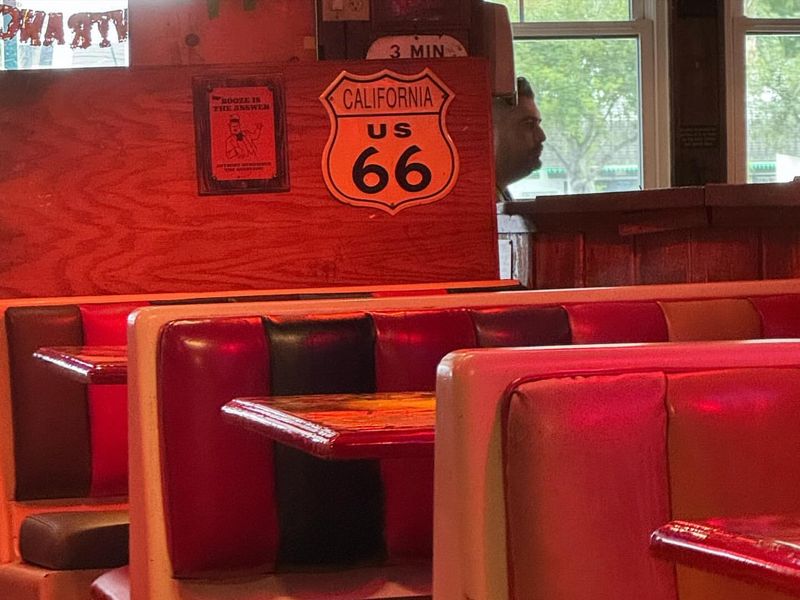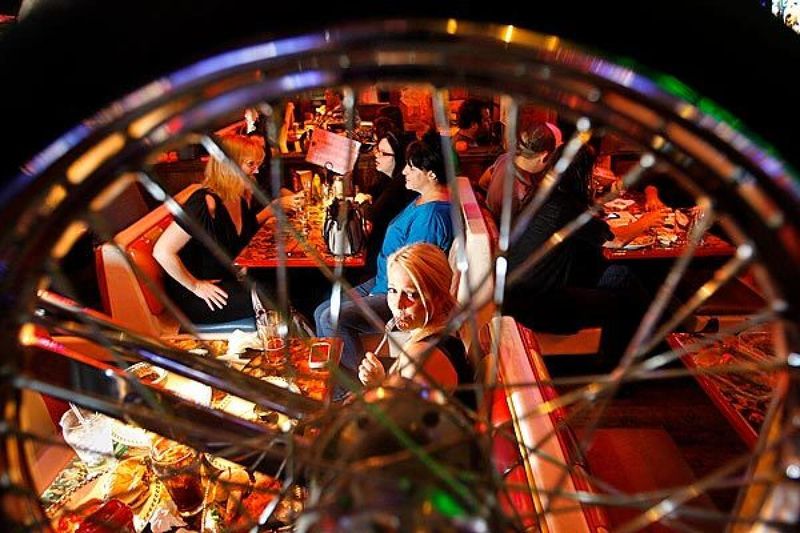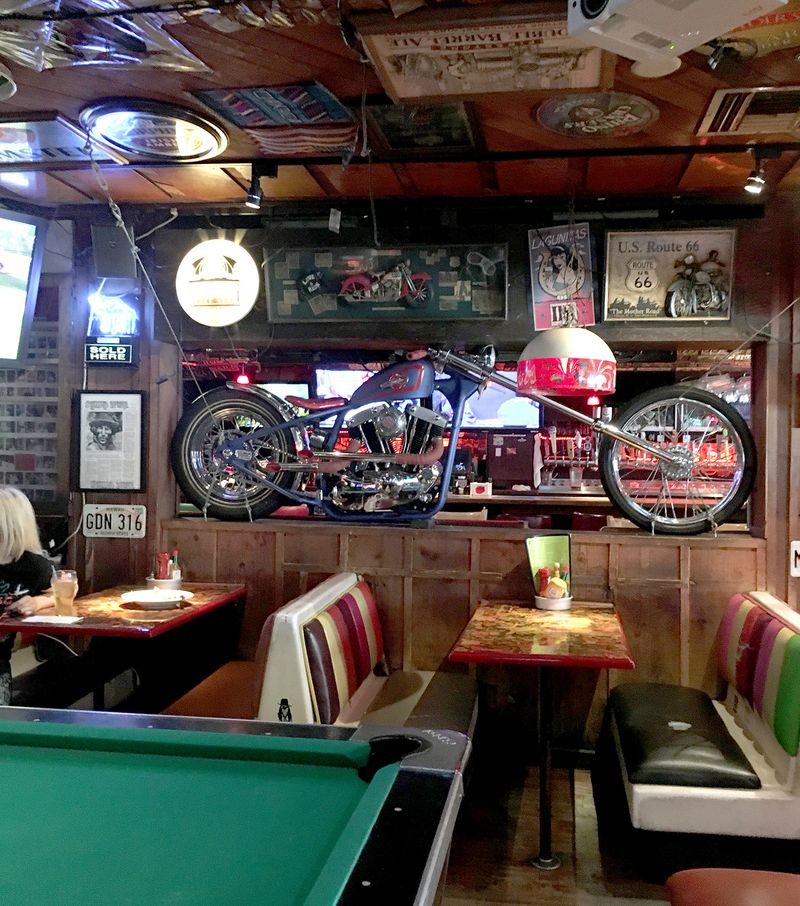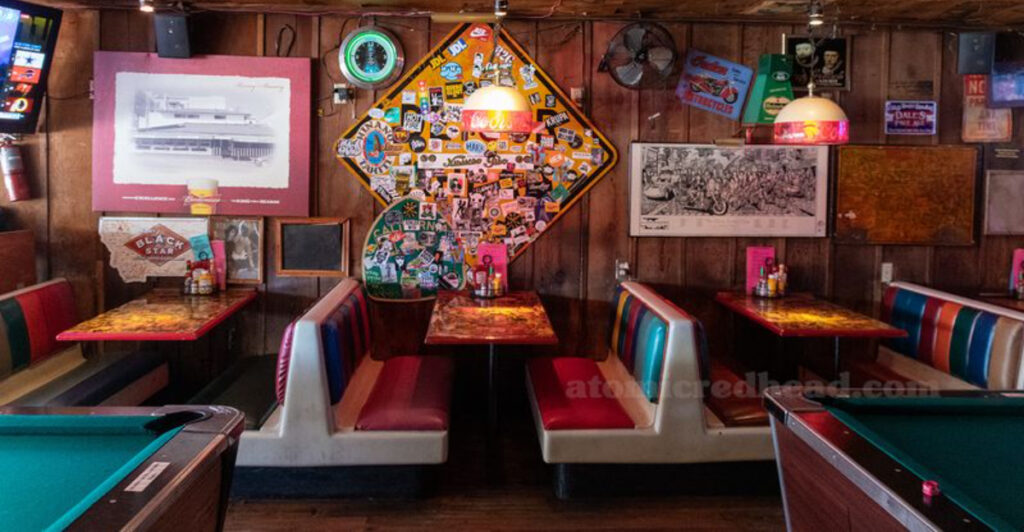Nestled in West Hollywood, Barney’s Beanery isn’t just any old diner—it’s a living piece of Los Angeles history. Since 1927, this Route 66 landmark has fed hungry travelers, Hollywood stars, and creative minds looking for a place to think. What many folks don’t know is that filmmaker Quentin Tarantino chose a special booth here to write parts of his famous movie Pulp Fiction, making this chili joint part of cinema history too.
Route 66 Roots

Back in 1920, John “Barney” Anthony started with a simple chili café in Berkeley. Seven years later, he relocated to a modest shack along the legendary Route 66 in West Hollywood, creating what would become an American institution.
The timing couldn’t have been better. As cars became popular and road trips turned into a national pastime, Barney’s perfectly positioned spot captured the hearts and appetites of travelers seeking authentic food with no fancy frills.
During World War II, soldiers found comfort in Barney’s hearty meals before shipping out, cementing its reputation as a place where regular folks and celebrities alike could enjoy a bowl of chili shoulder-to-shoulder.
Celebrity Magnet Through the Decades

Hollywood royalty discovered Barney’s unpretentious charm early on. Clark Gable and Judy Garland would slip into booths for quiet meals away from the spotlight, while later generations saw rock legends Jim Morrison and Janis Joplin make the diner their second home.
The walls themselves tell stories – Morrison was famously ejected for urinating on the bar counter. In a darker chapter of music history, Joplin reportedly had her final meal here just hours before her untimely death in 1970.
What keeps drawing the famous? Perhaps it’s the rare combination of anonymity and authenticity that’s increasingly hard to find in Los Angeles.
Tarantino’s Creative Corner

“There’s one booth there that I love. It’s a little one, and there’s a post there that kind of cuts you off.” Quentin Tarantino’s description of his favorite spot at Barney’s reveals why this unassuming corner became the birthplace of cinematic masterpieces.
The peculiar architecture of his chosen booth created a natural barrier against distractions. Within this makeshift office, characters like Jules Winnfield and Vincent Vega were born, their iconic dialogue flowing onto the page amid the clatter of plates and murmur of conversations.
Today, film buffs make pilgrimages to sit where the director once crafted his nonlinear narratives, hoping some creative magic might rub off on them too.
Century-Old Recipes & Nostalgic Atmosphere

The secret to Barney’s enduring appeal lies in a 100-year-old chili recipe that hasn’t changed since Prohibition days. Each spoonful connects diners to generations of Angelenos who found comfort in the same hearty flavors.
Beyond the signature chili, the menu reads like a greatest hits of American comfort food: juicy burgers, crispy onion rings, and frothy beer served in frosted mugs. The walls themselves serve as an informal museum of Americana, plastered with vintage license plates, weathered road signs, and decades of celebrity photos.
First-timers often gasp upon entering – the sensory overload of memorabilia creates an atmosphere that no modern restaurant designer could authentically replicate.
From Controversy to Community Landmark

Barney’s complicated past includes a dark chapter that nearly overshadowed its cultural contributions. For decades, an anti-gay sign hung prominently inside, becoming a painful symbol of discrimination until community activism finally forced its removal in the 1980s.
The journey from controversy to reconciliation reflects the broader social evolution of West Hollywood itself. When developers eyed the property for demolition in recent years, preservationists and longtime patrons united to save this flawed but important cultural landmark.
Today, Barney’s stands as a testament to how communities can acknowledge difficult histories while preserving spaces that hold collective memories and continue to bring diverse groups together over good food.



